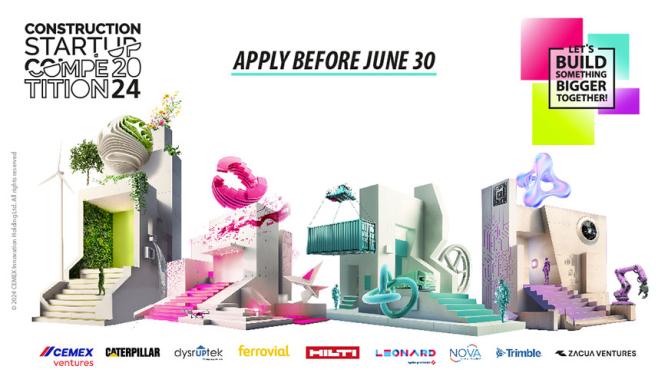The Latin etymology of the term “versatile” refers to the idea of mobility, or “turning easily”. While, in the French language, the term has taken on negative connotations (“flighty, fickle”), in periods of uncertainty this ability to adapt becomes a fundamental quality. It is a strength that many cities around the world are now experimenting with, trumpets blaring, against the backdrop of the ongoing health crisis. In the front lines, their infrastructures are being put to the test. Trains are turning into hospitals, digital networks are being stretched to capacity, and luxury design workshops are now making surgical masks… The prime purpose of our exchange and communication networks or production facilities is being largely reconfigured. Beyond the current crisis, in a world that already senses that emergency management will be its daily routine, the question of versatility is becoming of central importance. Long before Covid-19, start-ups were already being lauded for their ability to “pivot” and infrastructures for their “reversibility”. If, as Edgar Morin explains, “uncertainty remains an inexpugnable component of the human condition”, versatility is undoubtedly becoming a vital necessity.
Responding to uncertainty: infrastructures in the face of the Covid-19 crisis
On 26 March, a first medically-outfitted TGV circulated between Strasbourg, a city particularly affected by the virus, and the less stricken hospitals of the Pays de la Loire region. Why? To take advantage of the city-to-city rail transport system, while enjoying the stability of the train as a means of transport, necessary for to keep the most vulnerable patients safe. The trains used for the occasion were fully equipped for intensive care. “On a single TGV, we are able to move the intensive care unit of an average town of 200,000 inhabitants”, explains Pierre Carli, medical director of the SAMU in Paris. The operation, designed as part of the ORSAN plan, is right in step with the history of the rail system, a crucial contributor to the war effort in the past. In the same vein, the city of Tokyo is considering requisitioning part of the 5600 housing units in the Olympic Village. The helicopter carrier, “Thunder”, too, has been turned into a floating hospital. All over the world, hotels, exhibition centres, and even stadiums are being urgently transformed.
In large corporations, infrastructure re-purposing is on the rise. Without going down the whole list of initiatives, we’ll note the alliance between Air Liquide, PSA, Schneider Electric and Valéo to produce ventilators, the opening of a screening centre by Viparis, or the mobilisation of the cosmetics sector in the production of hydroalcoholic gel. As concerns logistics, the New England Patriots have made a notable contribution. The famed U.S. soccer team made a round trip to China to bring home masks.
Designing versatile infrastructures
This massive and unrestricted use of infrastructures raises the question of anticipation. While some of the uses now seen were planned for – such as the TGV – in most cases, the solutions were found by people just winging it. To facilitate transformations of purpose, many are now calling for infrastructures that are versatile and resilient “by design” as the rule, rather than the exception.
In architecture, the question of reversibility has long been on the table. In 1914, Le Corbusier designed the famous Dom-Ino house, the first-ever modular habitation. However, it was not until the start of the 21st century, in all its hypermobility, and due to the significant strain on resources, that the subject would be addressed again. Patrick Rubin, co-founder of Canal Architecture, explains that reversibility is primarily a remedy for deconstruction. Building from the “open-plan” concept, he describes a model that makes it possible to change the purpose of a building while modifying less than 30% of its components. In 2017, architect Anne Demians registered the IDI label, Building for Unspecified Destination or a “not completely finished” structure, with the ICADE. On the ground, the label’s principles were implemented in the Black Swan project in Strasbourg: three 28,000 m² towers, designed to be fully reversible. Modularity is based on the same rationale: how can structures be adapted to changing circumstances? The Dyson Institute of Engineering and Technology, designed by Wilkinson Eyre, offers a fine response. Conceived of around prefabricated CLT pods, the British brand’s campus can be adapted to a variety of situations. The trend doesn’t stop with architects. The “dynamic street” designed by Carlo Ratti behaves exactly like a pavement made reversible by mobile tiling, and which can thus change purpose depending on the time of day.
Even more radically, ephemeral buildings are now being given a new voice. Field hospitals, floating bridges and the like are escaping the military monopoly and inspire communities and professionals alike. Particularly well-suited to major events (Olympic Games, World Exhibitions), ephemeral structures prevent the proliferation of costly and unnecessary white elephants. The Pyeongchang Olympic Stadium or the French pavilion at the Milan World Expo illustrate these new intentions. The roundAround project, developed by MIT, lays out a vision of a dynamic bridge made up of small robotic boats. Designed for the city of Amsterdam, the construction is “versatile” enough to be turned into a waste delivery or collection system if needed.
A liquid world?
All these schemes are part of a much broader reflection on the model of society we are building. They are the blueprint for a world that is more open, more agile and more able to respond to uncertainty. At the same time, they contribute to the emergence of what Zigmund Bauman describes as a society “in an advanced stage of liquefaction”, characterised by speed, incessant flow and hypermobility, which no longer recognises anything sustainable. As in many areas, the current Covid-19 crisis is accelerating the adoption of strategic lines, the impact of which will no doubt resonate over the long term…

